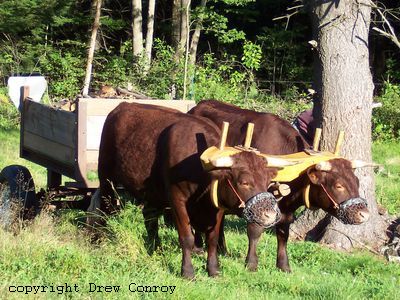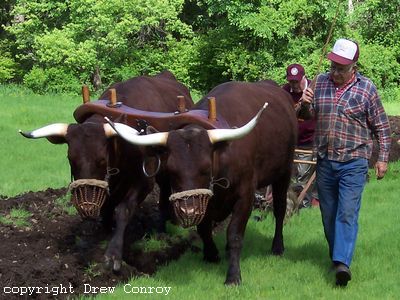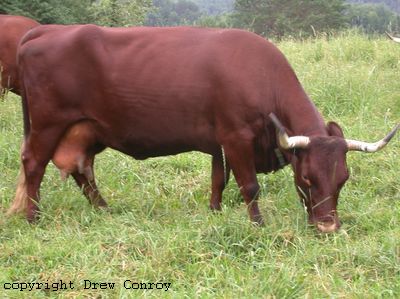


I have thought a lot about the issue of livestock breeds for when I get on my homestead.
The majority of beef cattle raised in this country are Angus or a mix with a lot of Angus in it. The majority of the dairy cattle utilized in the USA are Holstein.
What's wrong with this picture?
Angus and Holstein are specialized breeds.
Angus gains muscle (meat) earlier and faster than many other breeds when given optimal feed.
Holstein gives milk with a known average of butterfat when given optimal feed.
Both have veterinary problems and concerns peculiar to the breed.
Holsteins, in particular have a tendency to foot problems (foot rot) when in hot, humid regions.
Holsteins, because of being bred for milk production with emphasis on udder size, can also develop mastitis if not *milked out* properly.
Angus have to have shelter in cold climates and are a *water needy* breed in hot, dry climates.
Look at commercially raised turkeys.
They are bred to have the large and succulent breasts we all want to carve at the Thanksgiving Dinner. The price of that breeding?
They have to artificially inseminate the turkey hens because the poor birds can no longer naturally breed.
Look at the meats in the supermarket. All come from commercial breeds. They are housed in little cages or stalls and artificially bred and fed to have those qualities that we, as Americans, have come to value and expect on our tables.
No, this is not some PETA-style rant about animal cruelty.
This a rant about the dangers and ills of specialization in livestock.
Lets do a hypothetical scenario:
You own 20 acres of fairly okay land in Pennsylvania or Ohio for your homestead. You have 5 acres in gardens and orchards, your plants and trees picked out with an eye to the climate and suitability.
So, you have 15 acres to use for livestock.
Lets say you have 3 children and a spouse. You want milk for drinking, to make butter and cheese. You hope to have enough milk to help fatten that pig you dropped into a pigsty you built next to the gardens. With the high gas prices, you are nervous about using a tractor to do plowing and/or other heavy chores. You want beef to eat as well.
You look at the local livestock market and what you see are raw boned Holsteins, and they just don't look like their beef would be all that appetizing.
STOP
Take a look at the pictures at the top of this post.(View more at http://www.milkingdevons.org/)
Milking Devons, a rare breed that is dying out because of their lack of commercial viability. They can be used for milk, beef and oxen. The Pilgrims brought them from England. They are very well suited to New England, the mid-Atlantic states, the Ohio River Valley, basically, from the North East USA out to the Mississippi and down to the Carolinas.
They used to be common. But no more.
They are more expensive, but if you get a good cow and can get her bred by a Milking Devon bull, you will have a good start. They will be worth their weight in gold in future years.
Devons are healthy and rarely need the veterinary intervention that the more *commercial* breeds need. The milk is rich and high in butterfat, the meat well-marbled and tasty. Devon oxen teams are strong and smart and learn quickly. It takes skill to train a team, but it is a highly rewarding endeavor that will have a long term pay-off. If gas supplies dry up, while others are trudging to market, you'll be making the trip in an ox drawn cart. Instead of watching your fields go to seed or lie unplowed into summer, you'll have the advantage of having animals that are able to plow and harvest with the right equipment. Old ways will be the ONLY ways to succeed in the future, I firmly believe.
Other cattle breeds suitable for multi-purpose are:
Highland (especially good for mountainous areas and very cold climates) http://www.highlandcattleusa.org/
Irish Dexter (the itty bitty cattle!) http://www.dextercattle.org/
Watusi-Ankole (African cattle suitable for the Southwest region of the country) http://www.watusicattle.com/
Now, take those 15 acres, fence 5 acres for your pasture and 5 acres for a hayfield. (We'll talk about the last 5 acres in a later post)
No comments:
Post a Comment
Because of a couple of rude people that left comments that included links to porn pages and such, I have been forced to start moderating comments again.